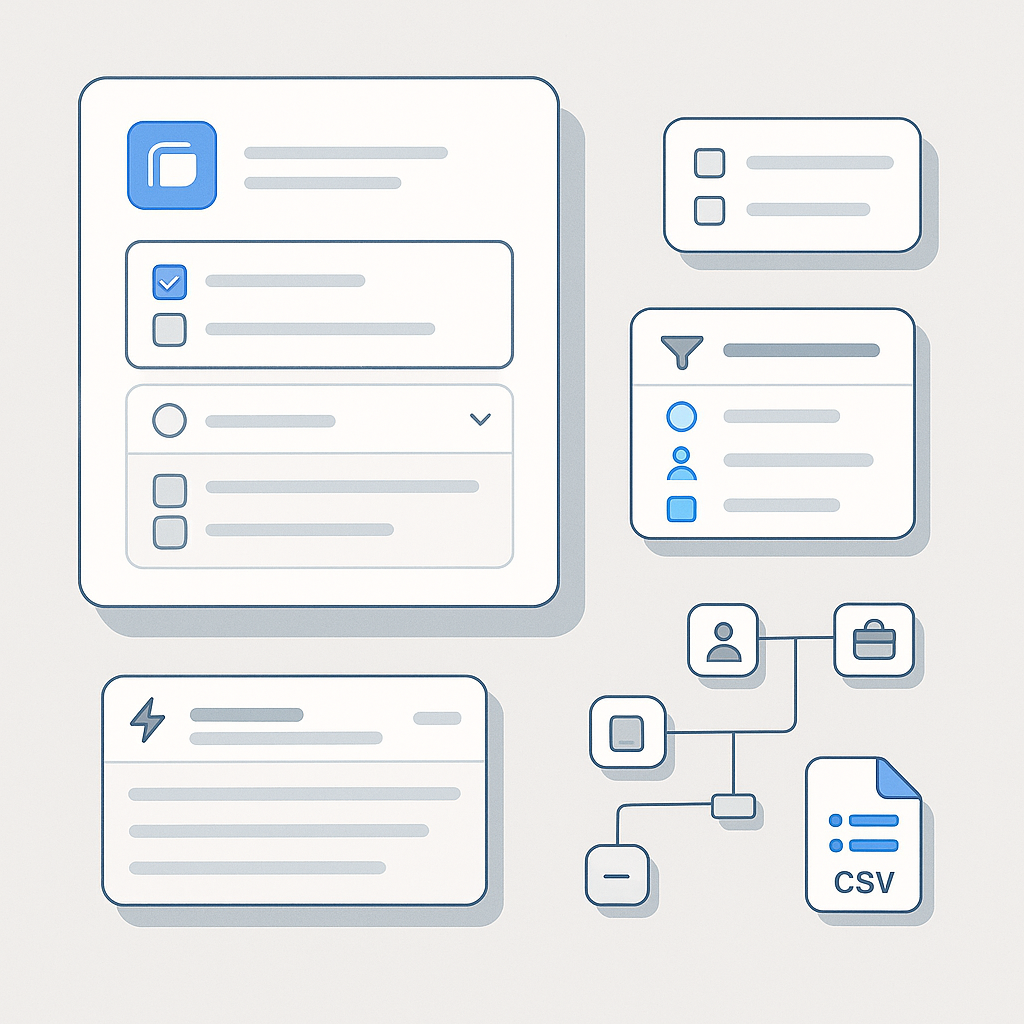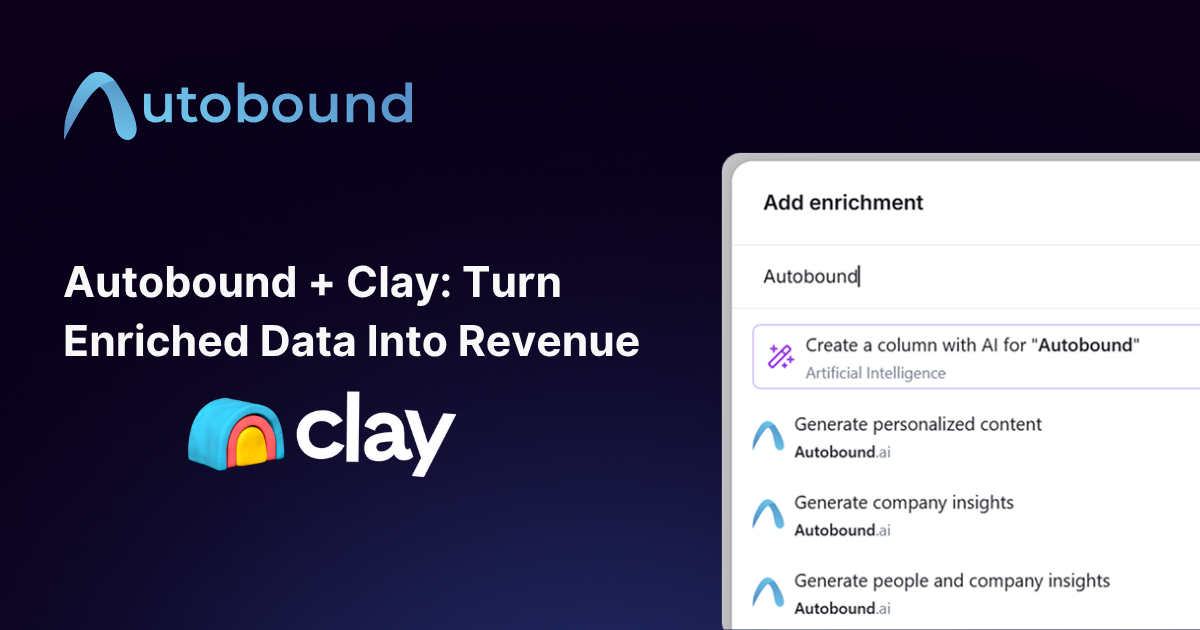Introduction: The Ever-Evolving Tech Landscape
Imagine a salesperson, fresh out of a time capsule from 1995, strutting into a bustling tech startup, a briefcase clutched tightly in hand. He's ready to close a deal, but instead of pitching sleek software solutions and cloud-based platforms, he's hawking fax machines and print ads, completely oblivious to the amused expressions of the young developers huddled around their laptops. The CEO, sporting a knowing smirk, politely informs him that their entire business operates in the ethereal realm of the cloud, their marketing driven by AI algorithms and social media campaigns. Our time-traveling salesman, hopelessly out of his depth, is left speechless, a poignant reminder that the tech industry waits for no one.
This amusing anecdote, while exaggerated for effect, underscores a fundamental truth: the tech industry is a relentless river of change, constantly evolving at a breakneck pace. Just as technology itself advances with dizzying speed, so too must the strategies for selling to tech companies. In 2025 and beyond, success hinges on understanding the unique challenges and opportunities presented by a tech-savvy audience, an audience that's not easily swayed by tired sales tactics. These buyers, bombarded with information from every corner of the digital world, have developed a discerning eye for authenticity and a healthy skepticism towards generic sales pitches. They crave efficiency, innovation, and above all, a deep understanding of their specific needs and challenges.
And the stakes have never been higher. U.S. B2B technology sales are projected to blast past the $70 billion mark in 2025, continuing their upward trajectory towards a staggering $80 billion by 2026, according to industry analysts at Circana. This isn't just a market you need to be in; it's the arena where the future is being written, one line of code at a time. This pillar page serves as your compass and map, guiding you through this dynamic landscape, providing actionable insights, and equipping you with the strategies needed to not just survive, but thrive in the exciting world of B2B tech sales.
Understanding the Modern Tech Buyer
Decoding the Tech Buyer's Journey
The days of the linear sales funnel, predictable as a metronome, are gone, replaced by a buyer's journey as winding and unpredictable as a mountain trail. Today's tech buyers, armed with smartphones, a wealth of online resources, and a healthy dose of skepticism, are calling the shots. They're not waiting for a salesperson to guide them through the buying process; they're conducting their own research, devouring information from a multitude of sources, and often forming their own conclusions before even engaging with a sales representative. In fact, most B2B buyers are already 57% of the way through the buying process before they even engage with a sales representative. This means your online presence, your content marketing, your digital storefront – it all needs to be firing on all cylinders, because for many prospects, it'll be their first impression of your company.
And it's not just your website; the modern tech buyer is influenced by a chorus of voices. Peer reviews, those digital testimonials from fellow travelers on the tech highway, carry significant weight, shaping perceptions and influencing decisions. Online communities, those virtual water coolers where tech professionals gather to share insights and swap war stories, are buzzing with conversations about your industry, your competitors, and yes, even your company. And let's not forget the power of independent tech blogs, those digital town criers with their fingers on the pulse of the latest trends and innovations. Ignoring these channels is like trying to shout across a crowded room – you might make some noise, but you're unlikely to be heard.
The Rise of the Tech-Savvy Buying Group
The days of the lone wolf tech decision-maker, isolated in their ivory tower, are fading fast. Today's B2B tech purchases are rarely made in a vacuum; they're the result of a collaborative process, often involving a diverse cast of characters, each with their own set of priorities, perspectives, and yes, even their own agendas. The average buying committee now consists of six to ten individuals, each of whom consults an average of four different information sources before making a decision. That's a lot of voices to be heard, a lot of perspectives to be considered, and a lot of potential roadblocks on the path to a closed deal.
Imagine a sales rep, armed with a killer PowerPoint presentation and a well-rehearsed pitch, confidently striding into a meeting to demo a new cybersecurity solution. They've done their homework on the CIO, the supposed decision-maker, but as the presentation unfolds, they're caught off guard by a barrage of questions from unexpected quarters. The CFO, laser-focused on ROI and bottom-line impact, starts grilling them about pricing models and long-term value. The Head of Engineering, concerned about system compatibility and integration headaches, chimes in with technical questions that would make a software architect sweat. And let's not forget the ever-vocal sales manager, eager to understand how this new solution will translate into more leads, more deals, and more commission checks. This scenario, familiar to anyone who's spent time in the trenches of B2B tech sales, highlights the critical importance of understanding the dynamics of the buying group. It's not enough to identify the decision-maker; you need to map out the entire ecosystem of influencers, understand their motivations, and tailor your messaging accordingly.
Data-Driven Strategies for Reaching Tech Buyers
Embracing the Digital-First Approach
In today's tech-driven world, where information flows like water and attention spans are measured in milliseconds, a digital-first strategy isn't just a good idea – it's the price of entry. Gartner, in their analysis of the evolving sales landscape, predicts that by 2025, a staggering 80% of B2B sales interactions between suppliers and buyers will occur through digital channels. Think about that for a moment – 80%! This means your website, your content, your social media presence – they're not just nice-to-haves, they're your digital storefront, your 24/7 sales team, the face you present to the world. Failing to make a positive and lasting impression in the digital realm is akin to setting up shop in a ghost town – you might have a great product, but no one's going to find you.
Optimizing Your Online Presence for Tech Buyers
Your website is your digital embassy, and for tech buyers, it needs to be more than just a brochure – it needs to be a hub of valuable information, a resource that educates, engages, and ultimately, converts. Think of it as your always-on sales representative, ready to answer questions, provide insights, and guide prospects through the buyer's journey, no matter what time zone they're in. But it's not enough to simply have a website; you need to optimize it for the specific needs and preferences of tech buyers.
- Modern Design and Easy Navigation: First impressions matter, and in the digital world, they're often formed in the blink of an eye. A cluttered, outdated website, with clunky navigation and a design aesthetic stuck in the early days of the internet, screams "amateur hour" to tech-savvy prospects. Keep it clean, intuitive, and mobile-responsive, because you never know when a potential customer might be browsing on their smartphone between meetings.
- Valuable Content Tailored to Tech Audiences: Tech buyers are allergic to marketing fluff, generic pitches, and empty promises. They crave substance, insights, and evidence that you understand their world, their challenges, and their goals. Ditch the corporate jargon and salesy language and instead, provide in-depth articles, white papers, case studies featuring recognizable tech companies, and thought leadership pieces that address the specific pain points faced by your target audience.
- Active Social Media Presence: LinkedIn, the world's largest professional networking site, is your playground. It's where tech professionals gather to connect, share insights, and stay ahead of the curve. Establish a strong presence, engage in relevant discussions, share valuable content that positions you as a thought leader, and don't be afraid to leverage the power of targeted ads to reach specific tech roles and companies.
Leveraging Intent Data for Smarter Outreach
In the world of B2B tech sales, knowledge is power, and intent data is the ultimate intel. It's like having a crystal ball that reveals which companies are actively researching solutions like yours, allowing you to focus your efforts on the hottest prospects, those most likely to convert from curious browsers to paying customers. But how do you tap into this valuable resource, this treasure trove of insights that can give you a competitive edge?
The answer lies in understanding the digital footprints left behind by potential customers as they navigate the online world. Look for telltale signs of intent, those digital breadcrumbs that reveal their interests, their challenges, and their buying intent.
- Website Visits: Are prospects from specific companies repeatedly visiting your product pages, lingering on case studies, or downloading resources like white papers and webinars? These are strong indicators of interest and warrant further investigation.
- Content Downloads: Which pieces of content are generating the most buzz? Are prospects gravitating towards specific case studies, white papers, or webinars? Analyzing content downloads can provide valuable insights into the topics, challenges, and solutions that are top of mind for your target audience.
- Webinar Registrations: Attendees who take the time to sit through a webinar are often highly engaged prospects, actively seeking solutions to their business challenges. This is a prime opportunity to showcase your expertise, build relationships, and move prospects further down the sales funnel.
- Engagement with Competitors: Are prospects visiting your competitors' websites, downloading their resources, or engaging with their content on social media? While it's never fun to see prospects flirting with the competition, this information can be valuable, providing insights into their needs, their decision-making process, and potential areas where you can differentiate your offerings.
By diligently monitoring these and other intent signals, you can transform your sales and marketing efforts from a game of chance into a strategic chess match. You can prioritize your outreach, personalize your messaging to resonate with the specific needs and interests of each prospect, and strike while the iron is hot, reaching out at the precise moment when they're most receptive to your message.
Crafting Compelling Messaging for Tech Audiences
Speaking Their Language: The Art of Tech-Focused Messaging
Tech buyers, those digital natives who live and breathe technology, are a discerning bunch, with a nose for authenticity and a low tolerance for marketing BS. They're bombarded with messages from every direction, each vying for their attention, each promising the moon and the stars. To cut through the noise and capture their interest, your messaging needs to be more than just persuasive – it needs to resonate, to connect on a deeper level, to speak their language.
This means ditching the corporate jargon, the empty buzzwords, and the generic sales pitches that sound like they were lifted from a 1980s sales manual. Instead, embrace clarity, conciseness, and a conversational tone that feels authentic and relatable. Remember, you're not trying to impress them with your vocabulary or dazzle them with your industry knowledge; you're trying to solve their problems, and that starts with speaking their language.
Highlight Value, Not Features
Tech buyers, unlike magpies attracted to shiny objects, aren't swayed by a laundry list of features or a dazzling display of technical wizardry. They're pragmatic creatures, driven by logic, data, and a desire to make their businesses run smoother, faster, and more profitably. They don't care about your product's bells and whistles – they care about what it can do for them, how it can solve their specific challenges, and ultimately, how it can impact their bottom line.
So, ditch the feature-dump approach and instead, focus on the value you provide. How does your solution help them overcome their most pressing challenges? How does it empower them to achieve their goals? How does it give them a competitive edge in a crowded marketplace? Instead of saying, "Our software has advanced analytics capabilities," try something like, "Our platform helps tech companies like yours reduce customer churn by 15% using predictive analytics." See the difference? You're not just talking about what your product does; you're highlighting the tangible benefits it delivers, the real-world impact it can have on their business.
The Power of Social Proof and Case Studies
In the world of B2B tech sales, trust is the currency of success, and there's no better way to build trust than with social proof, those digital testimonials and success stories that demonstrate the real-world impact of your solution. Tech buyers, skeptical by nature, want to see evidence that you can walk the walk, that you've helped companies like theirs achieve tangible results.
- Case Studies: Case studies are the ultimate weapon in your arsenal of persuasion. They're not just stories; they're real-world examples of how your solution has helped companies overcome challenges, achieve goals, and transform their businesses. When crafting case studies, focus on recognizable tech companies, those industry leaders and innovators that your target audience admires and aspires to emulate. Highlight the challenges they faced, the solutions you provided, and most importantly, the quantifiable results they achieved.
- Testimonials: Never underestimate the power of word-of-mouth marketing, those authentic endorsements from satisfied customers that carry far more weight than any marketing message. Leverage the power of testimonials by featuring quotes from industry experts, tech leaders, and satisfied customers who have used and benefited from your product or service. Keep them short, sweet, and to the point, focusing on the specific benefits they experienced and the tangible results they achieved.
Building Trust and Credibility
Trust isn't built overnight; it's earned through consistent effort, transparency, and a genuine desire to help your customers succeed. In the world of B2B tech sales, where skepticism is high and the competition is fierce, building trust and credibility is essential for long-term success.
- Transparency and Honesty: In an industry often associated with hype and hyperbole, authenticity is refreshing. Be upfront about your product's capabilities and limitations. Don't overpromise and underdeliver. Be honest about what your solution can and cannot do, and focus on building genuine relationships based on trust and mutual respect.
- Thought Leadership: Establish yourself as a trusted advisor, a go-to resource for insights and information, by creating and sharing valuable content that demonstrates your deep understanding of the tech industry. Write insightful blog posts, contribute articles to industry publications, participate in relevant online discussions, and share your knowledge freely. The more value you provide, the more you'll be seen as a thought leader, and the more trust you'll build with potential customers.
- Active Engagement: Don't be a digital wallflower, content to simply broadcast your message and hope for the best. Engage in two-way conversations, respond to comments and questions on social media, participate in industry forums, and attend relevant events. The more you engage with your target audience, the more human you become, and the more trust you'll build.
Navigating the Sales Process
From First Touch to Closed Deal: Mastering the Tech Sales Cycle
The B2B tech sales cycle, unlike a leisurely stroll in the park, is often a winding and unpredictable journey, fraught with challenges, objections, and unexpected detours. But with the right mindset, the right strategies, and a healthy dose of persistence, you can navigate the complexities and emerge victorious, deal in hand.
Personalization is Key: No More "Spray and Pray"
Let's face it: cold emails, those digital shots in the dark, can be brutal. The average cold email reply rate hovers around a dismal 1%, and for tech companies, with their spam filters working overtime, it's likely even lower. To cut through the noise, to pique the interest of tech buyers who are bombarded with hundreds of emails each day, personalization is no longer a nice-to-have – it's the price of admission.
Ditch the generic templates, those impersonal form letters that scream "mass email blast," and instead, craft messages that resonate with each stakeholder in the buying group. Reference company news, industry trends, or shared connections to demonstrate that you've done your homework, that you're not just sending out generic emails en masse, but that you've taken the time to understand their business, their challenges, and their goals.
Embracing Consultative Selling
In today's tech landscape, where buyers are more informed than ever and solutions are becoming increasingly commoditized, the role of the salesperson is evolving. Tech buyers aren't looking for pushy salespeople who rely on high-pressure tactics and slick presentations; they're looking for partners, for trusted advisors who understand their challenges, provide valuable insights, and help them navigate the complex world of technology. This is where consultative selling comes in, an approach that emphasizes building relationships, understanding needs, and providing solutions that deliver tangible value.
Position yourself as a trusted advisor by:
- Asking Insightful Questions: Don't fall into the trap of talking about your product ad nauseam. Instead, focus on asking insightful questions that uncover their pain points, their goals, their aspirations. The more you understand their business, their challenges, and their objectives, the better equipped you'll be to provide solutions that resonate.
- Active Listening: In the world of sales, it's easy to get caught up in the excitement of pitching your product, of highlighting its features and benefits. But true success lies in mastering the art of active listening. Pay close attention to their responses, ask clarifying questions, and demonstrate that you're genuinely interested in helping them succeed, not just closing a deal.
- Providing Valuable Advice: Don't be afraid to share your expertise, to offer insights and recommendations that go beyond simply pitching your product. Provide value upfront, without expecting anything in return. Become a trusted resource, a go-to expert, and you'll find that the sales will follow naturally.
Navigating the Complexities of Tech Sales Cycles
Tech sales cycles, unlike the predictable cadence of a metronome, are notorious for their length and complexity. They often involve multiple stakeholders, each with their own set of priorities and concerns, technical evaluations that can drag on for weeks or even months, and budget approvals that require navigating a labyrinthine bureaucracy. To stay on top of your game, to avoid getting bogged down in the weeds, it's crucial to:
- Manage Expectations: Set realistic timelines from the outset, and keep all stakeholders informed throughout the process. Don't overpromise and underdeliver. Transparency and clear communication are essential for building trust and avoiding frustration.
- Address Objections Head-On: Objections, those inevitable roadblocks on the path to a closed deal, are not insurmountable obstacles; they're opportunities to provide more information, to clarify misunderstandings, and to further build trust. Don't shy away from objections; embrace them, address them head-on, and use them as opportunities to strengthen your position and move the deal forward.
- Secure Buy-In: In the world of B2B tech sales, it's rarely enough to convince just one person. You need to secure buy-in from all decision-makers, from the technical experts to the budget holders, to ensure that your solution is seen as a strategic investment, not just another line item on a spreadsheet.
The Future of Selling to Technology Companies
Riding the Wave: Trends Shaping the Future of Tech Sales
The tech industry, like a surfer riding a wave, is in a constant state of motion, always evolving, always pushing the boundaries of what's possible. To stay ahead of the curve, to avoid being wiped out by the relentless tide of change, it's essential to keep a close eye on the emerging trends that are shaping the future of B2B tech sales.
The Rise of AI and Automation
Artificial intelligence (AI), once the stuff of science fiction, is rapidly becoming an indispensable tool for B2B sales teams, automating tasks, providing data-driven insights, and enabling a level of hyper-personalization that was once unimaginable. From sales intelligence platforms that provide real-time insights on prospects, their companies, and their buying behavior to conversational intelligence tools that analyze sales calls, identify areas for improvement, and provide coaching recommendations, AI is transforming the way sales teams operate, freeing them from mundane tasks and empowering them to focus on what they do best – building relationships and closing deals.
The Evolving Role of the Sales Professional
As AI and automation take over routine tasks, the role of the sales professional is evolving, shifting away from the transactional and towards the strategic. The future of tech sales belongs to those who can combine their human touch, their empathy, their ability to build relationships, with the power of AI, leveraging data-driven insights to personalize their approach and provide exceptional customer experiences. This means developing skills like critical thinking, problem-solving, communication, and emotional intelligence – skills that can't be replicated by even the most sophisticated algorithms.
The Increasing Importance of Customer Experience
In a crowded and competitive market, where products and services are becoming increasingly commoditized, exceptional customer experience is the ultimate differentiator. Tech buyers, accustomed to the seamless experiences provided by consumer tech giants, have high expectations, and they're not afraid to switch providers if their needs aren't met. To succeed in this customer-centric landscape, you need to go beyond simply meeting expectations – you need to exceed them, creating seamless, personalized experiences throughout the buyer journey, from the first touchpoint to the point of sale and beyond.
Conclusion: Embracing Change for Continued Success
The tech landscape, much like the ever-shifting sands of a desert dune, is in a constant state of flux. What worked yesterday might not work tomorrow, and what works today might be obsolete next week. To thrive in this dynamic environment, to navigate the complexities of B2B tech sales, adaptability is not just a desirable trait – it's the key to survival.
Embrace data-driven strategies, leverage the power of AI and automation, but never lose sight of the human element. Prioritize personalization, build genuine relationships, and always put the customer first. By staying ahead of the curve, by continuously evolving your approach, by embracing change as an opportunity for growth, you can navigate the ever-changing world of B2B tech sales and achieve lasting success.
So, tell us, what's your biggest challenge when selling to technology companies? What keeps you up at night? What strategies have you found to be most effective? Share your thoughts, your challenges, and your triumphs in the comments below – let's start a conversation, share our insights, and learn from each other.
About Autobound
Autobound's leading AI-powered platform delivers 350+ unique insights for go-to-market teams from financial filings, social media activity, 35 news events, competitor trends, job changes and more. Trusted by 7,000+ companies including TechTarget and validated by 220+ 5-star G2 reviews, we're unlocking hyper-personalization at scale, with native integrations for Salesloft, Outreach, and more. Leverage our developer-friendly API, try our Chrome extension, try our platform free, or contact our team to eliminate guesswork and drive measurable growth →
Built with love in San Francisco, CA




